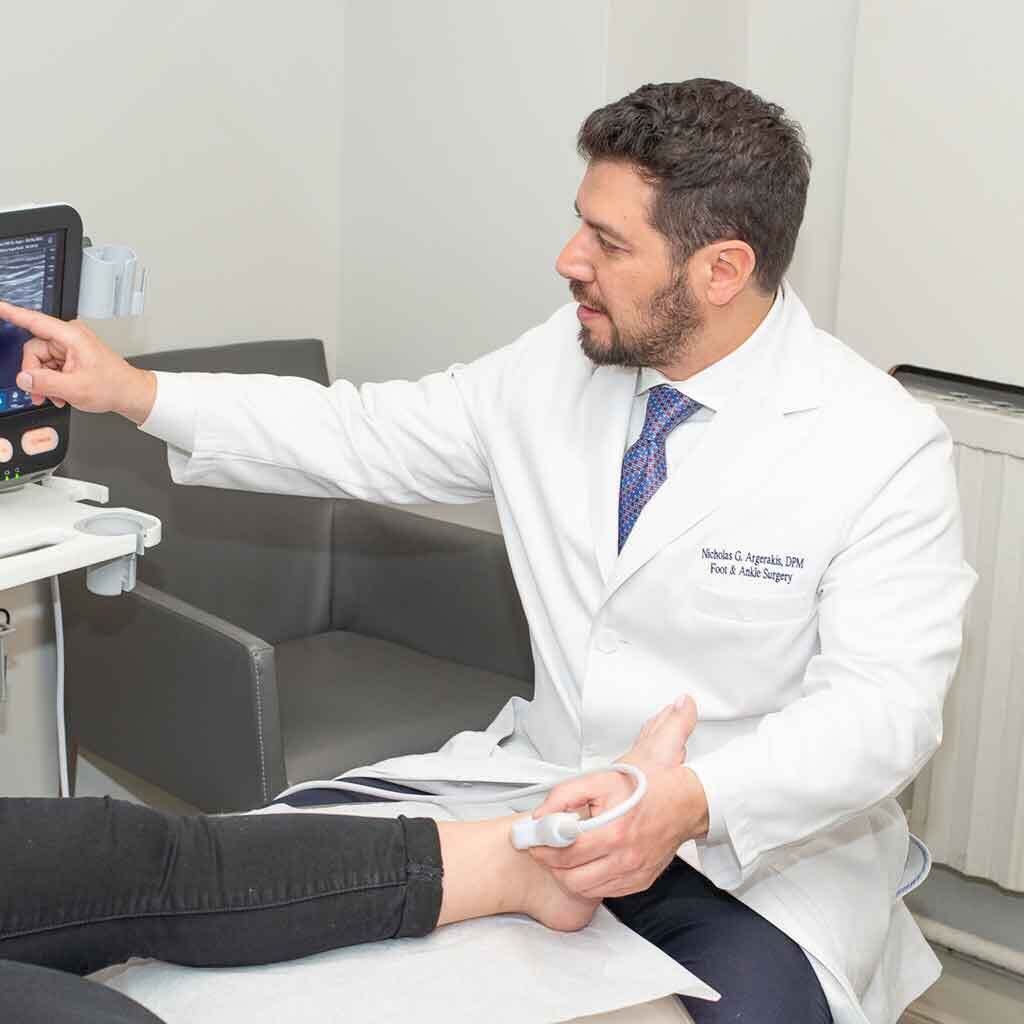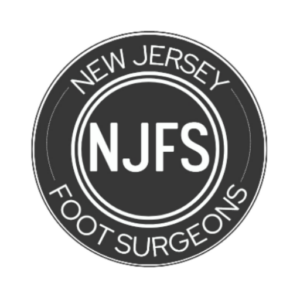Struggling with Morton’s neuroma? Dr. Nick Argerakis, DPM, FACFAS, offers expert treatment options to alleviate pain and help you regain mobility. Take the first step towards a pain-free life today.
The simplest step to address Morton’s neuroma is modifying activities that aggravate it. Ready to take charge of your life? Contact us at (732)-320-9173 to schedule an appointment and start your journey to pain-free living.
Key Takeaways
- Morton’s Neuroma is a painful condition caused by a thickened nerve, typically between the third and fourth toes, leading to sharp pain, tingling, and the sensation of a pebble in the shoe.
- Risk Factors include foot structure abnormalities, tight footwear, high-impact activities, and certain health conditions.
- Non-surgical treatments include footwear changes, orthotics, medications, corticosteroid injections, physical therapy, and activity modifications to alleviate symptoms.
- Surgical Options include neurectomy (nerve removal) and decompression surgery (nerve release), with the choice depending on the severity and patient’s condition.
- Effective Treatment is possible with the right care and intervention, with expert foot surgeons offering tailored solutions for relief.
What Is Morton’s Neuroma?
Morton’s neuroma is a painful condition that affects the nerve between the third and fourth toes. This happens when the nerve becomes irritated and thickens, leading to discomfort in the ball of the foot. People with Morton’s neuroma often describe the sensation as feeling like there is a pebble stuck inside their shoe.
Symptoms include sharp, burning pain, numbness, or tingling in the toes, which tend to worsen with walking or running and improve with rest. While anyone can develop Morton’s neuroma, it is most common in middle-aged women, often due to footwear choices that put pressure on the toes.
Causes and Risk Factors
Several factors can contribute to the development of Morton’s neuroma. One of the primary causes is compression or chronic irritation of the nerve due to the narrowing of the space between the toe bones. Individuals with certain foot structures, such as flat feet, high arches, bunions, or hammertoes, are at greater risk. Wearing high heels or narrow shoes can also compress the toes and aggravate the nerve. High-impact sports like running, basketball, or tennis put extra strain on the forefoot, increasing the likelihood of neuroma formation.
Additionally, repetitive micro-injuries or direct trauma to the foot can damage the nerve, leading to thickening and inflammation. Other contributing factors include obesity, prolonged standing, and medical conditions like diabetes or rheumatoid arthritis, which can affect nerve health.
Symptoms of Morton’s Neuroma
The most common symptoms of Morton’s neuroma include sharp, burning pain in the ball of the foot, often radiating into the toes. Many people experience tingling or numbness in the affected area, and some report a sensation similar to walking on a small stone or marble. In some cases, there may be visible swelling between the toes. Symptoms tend to worsen with prolonged walking, standing, or wearing tight shoes, while resting or massaging the foot can provide temporary relief.
How Is Morton’s Neuroma Diagnosed?
Diagnosing Morton’s neuroma typically starts with a thorough physical examination. A doctor will assess the foot for tenderness, sensitivity, and the presence of Mulder’s sign, which is a clicking sensation when pressure is applied between the toes. Imaging tests may also be used to confirm the diagnosis. X-rays help rule out fractures, arthritis, or bone spurs, while ultrasounds provide a detailed view of thickened nerve tissue. In some cases, an MRI is used to determine the size and location of the neuroma more precisely.

Non-Surgical Treatment Options
In the early stages, Morton’s neuroma can often be managed with conservative treatments. One of the first steps is modifying footwear. Wearing shoes with a wide toe box, low heels, and adequate arch support can significantly reduce pressure on the nerve. Custom orthotics and metatarsal pads help distribute weight evenly, relieving compression on the affected area. Over-the-counter pain relievers like ibuprofen or naproxen can reduce pain and inflammation. For more severe cases, corticosteroid injections may provide temporary relief.
Physical therapy, including exercises to strengthen the foot and improve flexibility, can be beneficial. Techniques such as deep tissue massage and ultrasound therapy may also help alleviate discomfort. Reducing high-impact activities and switching to low-impact exercises can prevent further irritation of the nerve.
Minimally Invasive Procedures
For patients who do not respond to conservative treatments, minimally invasive procedures can offer relief without major surgery. One effective option is alcohol ablation, where a highly concentrated alcohol solution is injected into the neuroma under ultrasound guidance. This treatment chemically destroys the thickened nerve tissue, reducing pain and inflammation.
Another minimally invasive approach involves making a small 2 mm incision to release the compressed nerve space, preserving the nerve and preventing permanent numbness. This procedure allows for quicker recovery compared to traditional surgery.
Surgical Treatment Options
If non-surgical treatments fail to provide relief, surgery may be required. There are two main surgical options for treating Morton’s neuroma. The first is a neurectomy, which involves removing part of the nerve to eliminate pain. This procedure can be done using either a dorsal approach (incision on the top of the foot) or a plantar approach (incision on the sole). The dorsal approach avoids weight-bearing areas, leading to a more comfortable recovery. The plantar approach gives direct access to the neuroma but may result in longer post-surgical discomfort.
The second option is decompression surgery, which involves releasing the ligaments around the nerve to relieve pressure without removing the nerve itself. This is a less invasive option that may be ideal for patients with milder symptoms or those wishing to avoid nerve removal. Both surgical procedures are performed on an outpatient basis, allowing patients to return home the same day.
Conclusion
Morton’s neuroma can be a frustrating and painful condition, but with the right treatment, relief is possible. Whether through conservative measures, minimally invasive procedures, or surgery, there are multiple options to help alleviate discomfort and restore foot function. If you’re struggling with Morton’s neuroma, our expert foot surgeons at New Jersey Foot Surgeons are here to help. Contact us today at (732)-320-9173 to schedule an appointment and take the first step toward a pain-free life.


